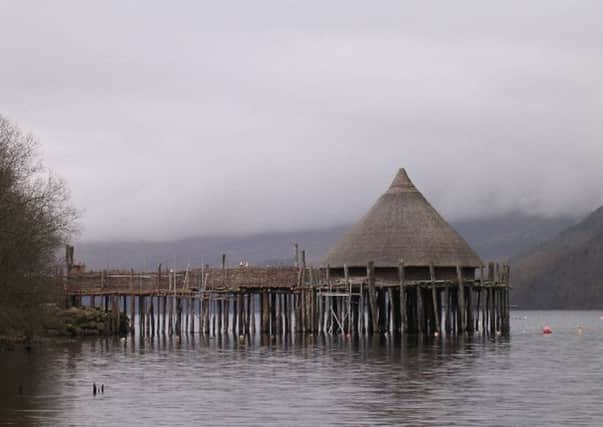Breakthrough in study of Scotland's ancient loch dwellers


For the first time, experts can say people were living on Loch Tay in Perthshire between 370BC and 355BC following a study of the sunken remains of a crannog, a wooden house supported over the water by stilts.
The results of tree ring analysis of highly preserved wood recovered from Loch Tay have radically narrowed down the timeline for life on the water during the early Iron Age.
Advertisement
Hide AdPreviously, it was only known that the Loch Tay crannogs were inhabited during a 400 year period from around 800BC.
Michael Stratigos, post-doctoral researcher on the Living on Water project, said the high level of accuracy on the dates broke new ground.
He said: “To get the date to a 15 year period is an incredible change for us.
“It allows use to build the social history of these crannogs and really think about the people who were building these things and living there.”
The results follow an investigation of one of 18 crannog sites on Loch Tay with each structure believed to have held between 15 and 20 people, plus animals.
Mr Stratigos added: “If all 18 crannogs on Loch Tay were occupied at one time, then you have a very busy loch.
Advertisement
Hide Ad“Of course, if we can work out that just one or two were occupied at the same time, then that is a very different story.
“At a conservative estimate, each crannog takes 1,000 trees to build so whoever was building them, they were making a massive investment.
Advertisement
Hide Ad“The fact of the matter is that crannogs are so unexplored, particularly when you think there are at least 500 known crannogs across Scotland.”
He said there were several reasons why crannogs may have been built, including climatic change which could have made the scramble for land more competitive.
He added: “They may have been built to demonstrate wealth or perhaps there was some kind of cosmological system at play. Perhaps you held the water to be an important place.
“These are the sorts of questions we will be asking and we will be better placed to answer them now we have that this new high level chronology in place.”
The dark, cold water of Loch Tay has proved to be an exceptional preservative of the wood with a lack of oxygen leaving the timbers in remarkable shape.
Mr Stratigos added: “You get whole vertical timbers preserved to the extent that you can still see the axe marks.
Advertisement
Hide Ad“Even more than that, when you look at the tool marks under the microscope you can see the minor defects in the axe. You can tell what axe was used.
“When you saw into the timbers - and we just use a normal saw - it looks like fresh wood.
Advertisement
Hide Ad“You go under water and are looking at material that is 2,500 years old. It is a very powerful experience.”
This week, the Royal Archaeological Institute announced funding for Mr Stratigos and his colleagues, Dr Derek Hamilton and Professor Gordon Cook, also of Glasgow University’s Scottish Universities Environmental Research Centre, to expand their investigations to the water’s edge at Loch Tay.
He added: “They question we are trying to also answer is if there was anything contemporaneous with the crannogs on the shore.
“Were people only living on crannogs, or did only certain people decide to build and live on the water? That is another interesting thought.”
A survey of land around the loch will look for pits, ditches and evidence of metalworking to gauge possible habitation.
The Living on the Water Project is funded by Historic Environment Scotland and draws expertise from Scottish Universities Environmental Research Centre at the University of Glasgow, the Scottish Trust for Underwater Archaeology, the Scottish Crannog Centre, the Universities of Edinburgh, Bradford and Nottingham Trent and AOC Archaeology.
Advertisement
Hide AdAt Loch Tay, artefacts earlier found by researchers include a foot plough, animal bones, fruit, nuts, and well-preserved plant remains. Other finds, such as wooden utensils, fir candles (light sticks) and even a tiny whistle have been recovered.
The items are on show at the Scottish Crannog Centre on Loch Tay, where a replica crannog sits in the water.
